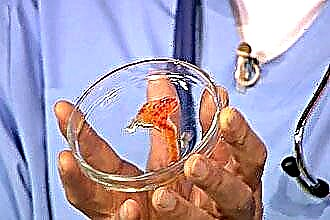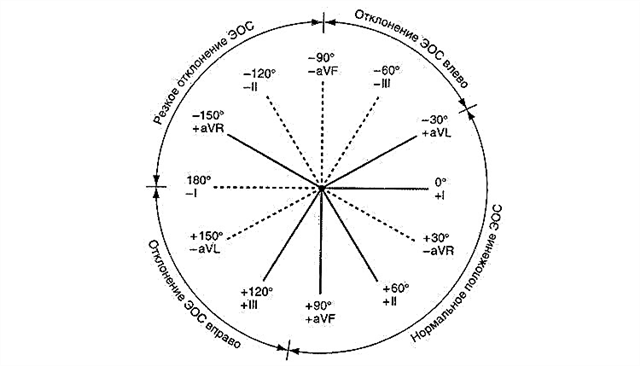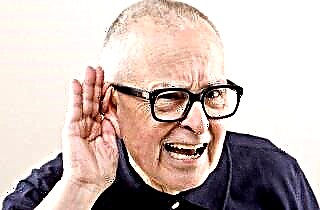People often have an unpleasant feeling of tightness in their throat when it is very difficult to swallow saliva or food. If infectious inflammation is ruled out, a lump in the throat when swallowing is likely a sign of other more serious medical conditions. A symptom in which swallowing is difficult and there is a sensation of a foreign object in the throat is called dysphagia. This unpleasant feeling can manifest itself in psychoemotional disorders, fear, problems with the esophagus, and various chronic diseases.
Symptoms
If the feeling that there is a lump in the throat when swallowing is not accompanied by a violation of the swallowing process, then this is not dysphagia.
 In such situations, the cause of difficulty swallowing can be angina pectoris, abnormalities in the thyroid gland, various mental disorders.
In such situations, the cause of difficulty swallowing can be angina pectoris, abnormalities in the thyroid gland, various mental disorders.
Symptoms for a feeling of tightness in the throat can be different, it is important to diagnose in time and find out the cause.
Sometimes an unpleasant symptom can occur exclusively in the process of eating solid foods. If the disease is at an advanced stage, then in this case, even swallowing liquid drinks and saliva causes a feeling of constriction in the throat.
The main symptoms of dysphagia include:
- coughing and choking while eating;
- heartburn and belching after or during meals, often through the nose;
- the feeling of the presence of a foreign object in the throat;
- weight loss and an increase in the incidence of colds due to eating disorders.
Causes
The symptom can develop both at the level of the pharynx and in the esophagus, depending on what caused the disease. The choice of treatment also depends on the cause of the tightness in the throat. Only the correct diagnosis of the disease and timely treatment started will help the patient to completely get rid of the unpleasant symptom and return to good nutrition.
The main causes of a lump in the throat when swallowing, when it is difficult and painful to swallow, include:
- age-related changes in the work of the swallowing muscles;
- chronic diseases;
- neuralgic disorders;
- congenital diseases;
- problems in the work of the esophagus.
The mechanism of swallowing is a complex process, so disorders can occur at various stages. Quite often, the feeling of constriction occurs in the elderly. However, problems with swallowing, even in old age, should not be taken for granted - they must be treated promptly.
Dysphagia can also develop in the presence of chronic diseases. It also becomes difficult to swallow as a result of possible complications after undergoing neck surgery.
If the sensation of a lump in the throat has arisen due to neurological problems, then in this case the work of the nerves that are responsible for the work of the swallowing muscles is disrupted. Dysphagia in this case can be caused by:
- stroke;
- tumor development;
- cognitive disorders.
Difficulty swallowing can also occur as a result of congenital abnormalities and developmental disorders of the child. Among the most common causes of dysphagia in this case are:
- lag in learning - difficulties with memorization, acquisition of new knowledge, difficulties with communication;
- neurological abnormalities, as a result of which the coordination of movements in the child is impaired;
- genetic congenital abnormalities such as cleft lip or cleft palate.
An obstruction in the throat or esophagus can also cause a coma. So, obstruction can be caused by:
- swelling of the larynx or esophagus;
- radiation therapy, which causes scars that reduce the lumen in the organs of the anterior digestive system;
- reflux disease, in which stomach contents are thrown back up the esophagus, causing inflammation and scarring
- infectious pathologies that cause inflammation of the esophagus.
Also, dysphagia occurs against the background of abnormalities that affect the muscles, the main functions of which is the movement of food through the esophagus. However, this kind of disease is rare. Among the disorders that cause difficulty swallowing are:
- scleroderma - damage to healthy tissues by the forces of their own immunity;
- achalasia of the esophagus - insufficient relaxation of the muscles of the esophagus, which makes it difficult for the latter to work and pushing food into the stomach.
Diagnostics
At the first signs of difficulty swallowing food, a feeling of a lump in the throat, it is necessary to undergo a full examination by a specialist in order to find out the cause of the disease.
The patient must undergo an initial examination, and the doctor may also prescribe additional diagnostic procedures, for example, clinical and biochemical blood tests, X-ray examination, hormone tests. The main purpose of the additional examination is to determine the location of the localization of the problem that caused the problem with swallowing. So, the doctor will need to know
- how long the feeling of tightness in the throat lasts;
- the patient constantly experiences a feeling of coma or it appears periodically;
- What food causes problems with swallowing or it is difficult even to swallow saliva;
- whether there is a tendency to weight loss.
The list of diagnostic procedures for difficult swallowing includes:
- a patient's swallowing ability test - the speed and number of sips are calculated, for which a certain amount of liquid will be drunk;
- fluoroscopic examination of the process of swallowing food to identify obstruction of the esophagus, based on the use of barium contrast;
- manometry - assessment of the functional ability of the esophagus;
- diagnostic procedures based on measuring acidity in the stomach and esophagus;
- endoscopic diagnostics of internal organs;
- assessment of the patient's main indicators for exhaustion, general blood and urine tests.
Treatment
 Although the occurrence of a lump in the throat when swallowing food and saliva is often fearful, the unpleasant symptom is treatable. The choice of therapy is based on the causes of the disorder. Most often, treatment is based on eliminating the cause of the unpleasant symptom, as well as facilitating the swallowing process. The therapy can be performed by a variety of specialists, such as a gastroenterologist, neurologist, or therapist.
Although the occurrence of a lump in the throat when swallowing food and saliva is often fearful, the unpleasant symptom is treatable. The choice of therapy is based on the causes of the disorder. Most often, treatment is based on eliminating the cause of the unpleasant symptom, as well as facilitating the swallowing process. The therapy can be performed by a variety of specialists, such as a gastroenterologist, neurologist, or therapist.
If the symptom is caused by oropharyngeal dysphagia, then in this case it is necessary to look for ways of treating neurological diseases that are difficult to treat. Therapy consists in changing the diet, teaching the patient a new way of swallowing food, feeding through a tube.
Optimizing the diet helps to eliminate difficulty swallowing, and the patient is assisted in this by a dietitian.
So, often recommendations are based on the use of soft, fairly liquid food, the swallowing of which will not cause a feeling of a lump in the throat and pain. Often in such situations, it is recommended to add citric acid to products.
A set of specially designed exercises will help make it easier to swallow. It aims to strengthen the swallowing muscles. Swallowing retraining is based on gustatory and temperature food stimulation.
Feeding the patient through a tube is required only in extreme situations, when dysphagia completely limits the ability to eat and drink. The probe also makes it easier to take medications.
Therapy for esophageal dysphagia can be carried out at home using various medications, which are prescribed depending on the reasons that caused this symptom. Proton pump inhibitors are used to relieve inflammation and muscle spasm in the esophagus in reflux disease. Treatment of achalasia requires the use of nitrates and calcium channel inhibitors, the use of antispasmodics. Therefore, only a specialist can determine the method and tactics of treatment.
 Also, among the commonly used methods of eliminating problems with swallowing are:
Also, among the commonly used methods of eliminating problems with swallowing are:
- endoscopic dilatation - stretching the walls of the esophagus in case of obstruction caused by scar tissue;
- esophageal stenting - expansion of the walls of the esophagus in the event of an inoperable tumor.
When dysphagia is congenital, treatment will also be based on an analysis of the underlying causes of the disease. If the difficulty in swallowing is caused by infantile cerebral palsy, then the child is taught to swallow, and probes are used to deliver food. Congenital facial pathologies in the form of a labial or palatal cleft are treated surgically. When the feeling of a lump in the throat is caused by the narrowing of the esophagus, then in this case I use surgical methods to expand it. With reflux of the esophagus in children, drug treatment is used, as well as nutritional correction.
Complications
If the treatment for coma is not started on time, there is a high risk that food will block the airways if swallowed. In this case, there is a feeling of suffocation, coughing. If the patient often chokes on food, this significantly increases the likelihood of aspiration pneumonia - an infectious pathology of the lungs, which develops when foreign objects accidentally enter the respiratory tract. Most often, this complication develops in older people.
Symptoms of this type of pneumonia include:
- cough;
- significant increase in temperature;
- pain in the chest area;
- difficulty swallowing;
- shortness of breath, causing severe shortness of breath.
Treatment of this type of pneumonia is based on antibiotic therapy; in severe cases, the patient must be treated in a hospital setting. In childhood, dysphagia can lead to malnutrition and malnutrition, affecting the child's overall development. A child who feels a lump in the throat and difficulty swallowing food is often stressed, which causes deviations in their behavior.



